‘Stereoscopic’ technique used to capture three-dimensional pictures, similar to modern ‘Magic Eye’ images
Special stereoscopic pictures of Melbourne have survived from the early 1900s, revealing an insight into how the city used to look. See the images in 3D here.
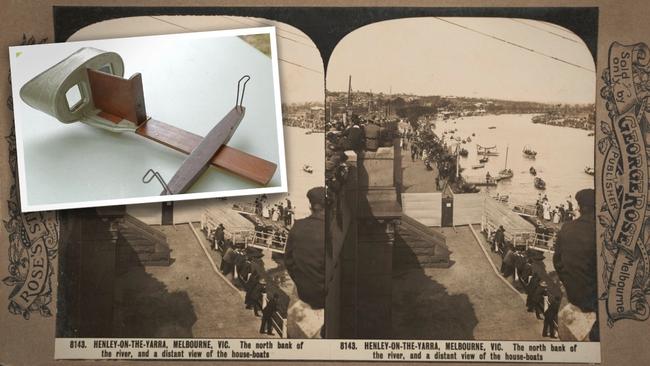
Victoria
Don't miss out on the headlines from Victoria. Followed categories will be added to My News.
An early form of 3D photography provides an amazing glimpse at how Melbourne looked to its residents more than 120 years ago.
The antique ‘stereoscopic’ technique was used to capture three-dimensional pictures that could be viewed without the aid of goggles, using a basic crossover method.
Hundreds of the specially made images have survived, and show a vibrant fledgling metropolis in a way we have never seen it before.

Trick photography
Early photographers discovered a 3D image could be created using a method called stereopsis, which simulates the human eyes.
A special camera with two lenses, a few inches apart, was used to capture a pair of images.
The two near identical images were then printed side-by-side on a piece of board about the size of a postcard, called a stereograph.
A ‘stereoscope’ was then used to view the images in 3D.
The device held the card on a sliding mount in front of a viewfinder.
When held at the right distance, each eye would view a different side of the card.
The minor differences in perspective between the two pictures would trick the brain into seeing a 3D image.
The process is similar to modern ‘Magic Eye’ images, which rely on the viewer relaxing their vision until a 3D image appears, as if from nowhere.
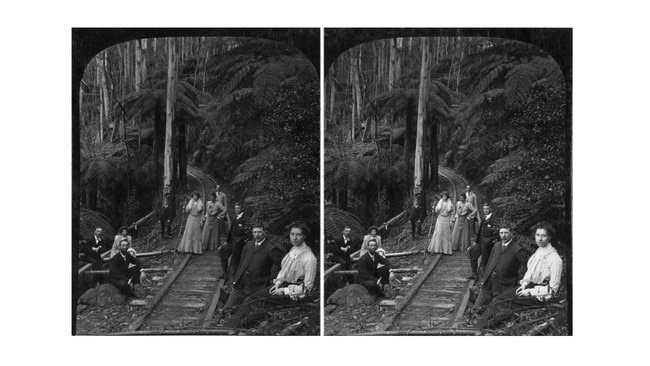
TAP HERE TO DOWNLOAD IMAGE TO VIEW ON MOBILE

TAP HERE TO DOWNLOAD IMAGE TO VIEW ON MOBILE
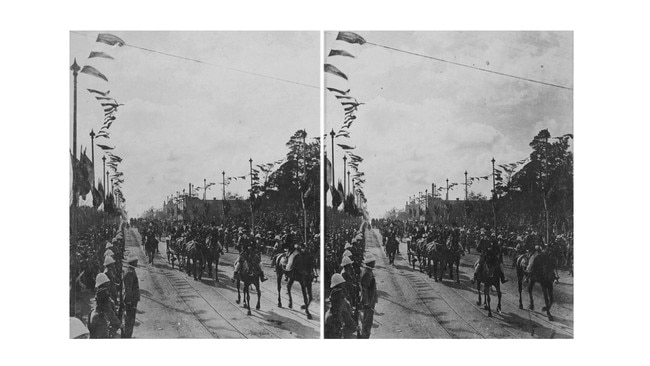
TAP HERE TO DOWNLOAD IMAGE TO VIEW ON MOBILE
Stereoscopic images were first developed in Europe in the 1830s using illustrations, before the advent of photography.
By the end of the 1800s they were prolific.
A stereoscope with a big stash of stereograph cards was a common feature in homes around Melbourne.
Viewers could catch 3D glimpses of far-off places like London, Paris and the Italian Lakes as an early sort of travel journalism.
But the plethora of stereographs printed in Melbourne around the turn of the 20th Century, particularly for the visit of the Duke of York in 1901, provides modern Melburnians with an opportunity to see the city as its old inhabitants did.
Old Melbourne in three dimensions
Almost all aspects of Melburnian and Victorian life were captured in stereograph by dedicated studios, included a Stereoscopic Company run by George Rose.
One image shows a group of Melburnians relaxing on St Kilda pier with a pair of dogs sitting lazily by.
Another shows boys playing dress-ups as soldiers at a dusty junction in St Kilda as ladies with parasols pass in the background.
A stereograph of a ‘Henley on the Yarra’ racing regatta shows a young spectator perched on the edge of the Princes Bridge, gazing across the busy river.
And a hiking party on the railway track near Warburton is brought to life in 3D, some 120 years after they tramped the rugged paths through the bush.
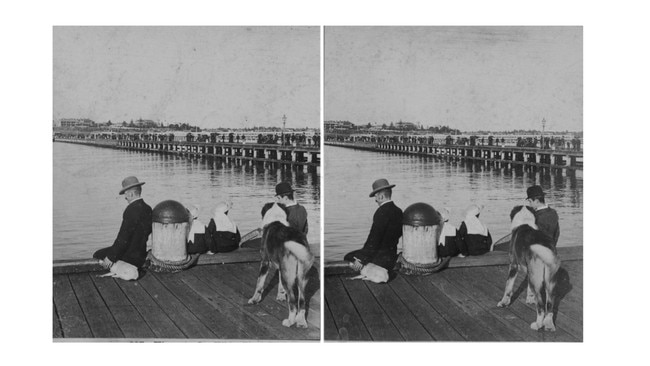
TAP HERE TO DOWNLOAD IMAGE TO VIEW ON MOBILE

TAP HERE TO DOWNLOAD IMAGE TO VIEW ON MOBILE

TAP HERE TO DOWNLOAD IMAGE TO VIEW ON MOBILE
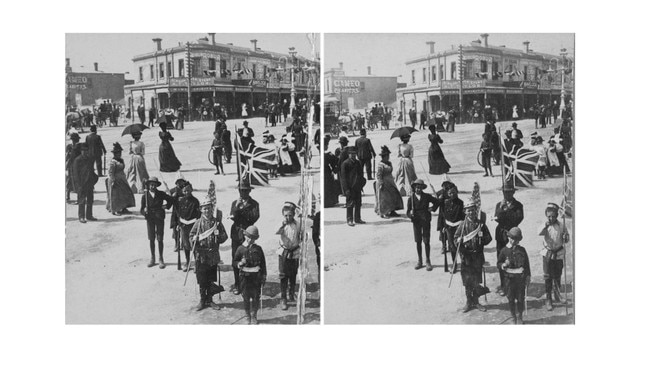
TAP HERE TO DOWNLOAD IMAGE TO VIEW ON MOBILE
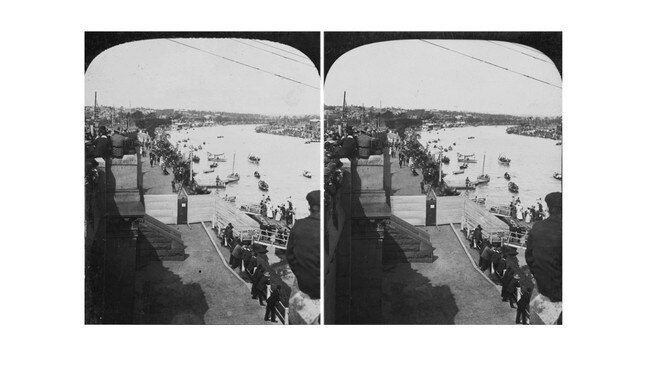
TAP HERE TO DOWNLOAD IMAGE TO VIEW ON MOBILE
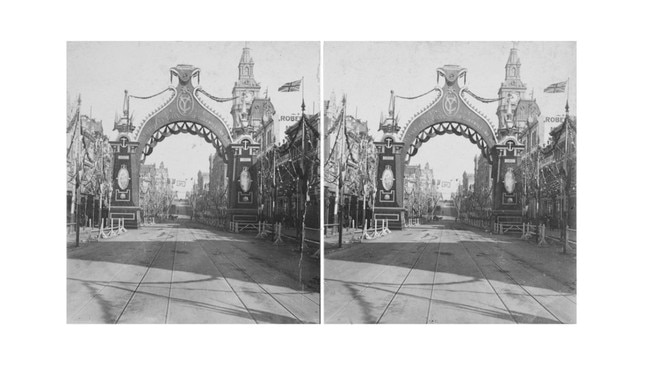
TAP HERE TO DOWNLOAD IMAGE TO VIEW ON MOBILE
Among the hundreds of stereographs kept in public databases are dozens of images of the Duke of York’s 1901 visit to Melbourne and Victoria, during which the city was ornately decorated.
A huge decorative arch is seen over Bourke St while a horseback parade on Evelyn St, later renamed Nicholson St, shows Melbourne’s signature tram tracks stretching back towards the horizon.
As camera technology became more portable, the stereographs ballooned in number.
Soon photographers were trekking all over the countryside to take 3D photos of picnickers hiking in the Dandenongs and in the wilderness near Lorne.
One intrepid photographer, J D Edwards, ventured with his stereoscopic camera down the mines of Bendigo and captured gritty pictures of hardworking, hard-living miners.
The stereograph experience was a favourite pastime of the middle class around the western world, but it gradually died out.
The development of new media such as the wireless, the telephone and later the television, gave Melburnians a new way to connect to the world.
Photography gradually ebbed to two dimensions, but 3D technology never went away.
As early as the 1920s films were made in 3D using a new light filtering technique with glasses worn by the viewer.
3D cinema hit a new peak in the 1950s and 1960s with dozens of 3D American feature films released.
It was revived in the 2000s with films such as James Cameron’s Avatar and experiences such as IMAX, and has recently crossed over to virtual reality with the creation of the less-popular-than-expected ‘Metaverse’.
Modern 3D technology seems a far cry from the basic black and white postcard stereographs of the early 20th Century.
But the legacy of the old technique, in the form of forgotten stereographs tucked away in shoeboxes around the state, is a hidden trove of little windows into a city long gone.




